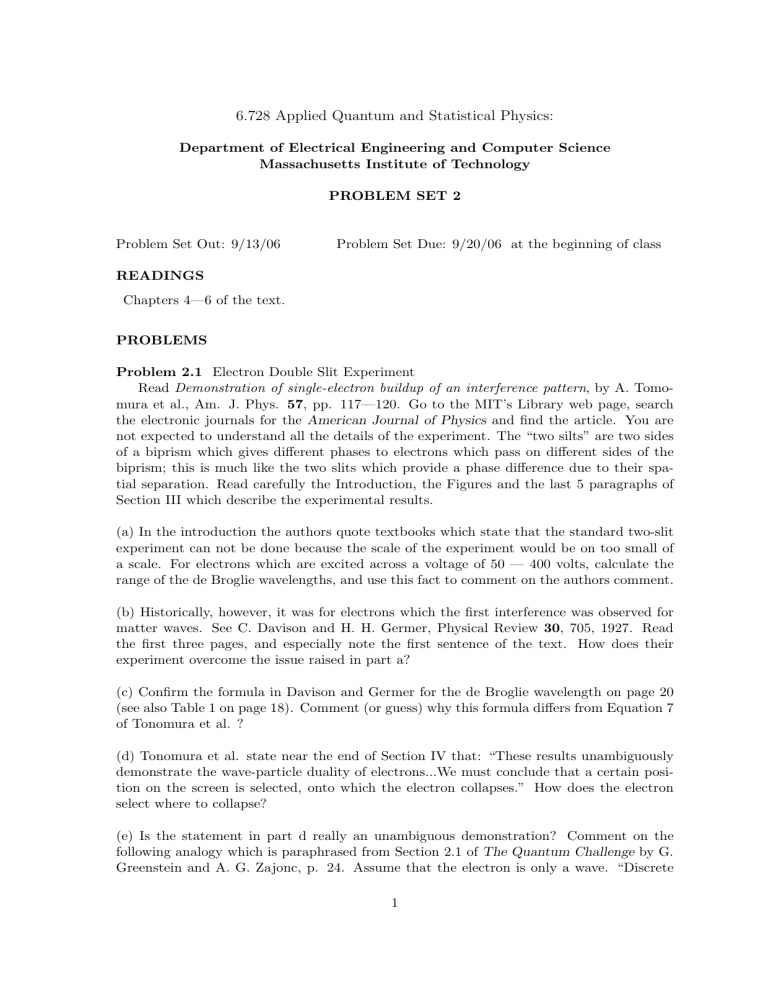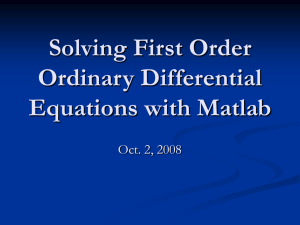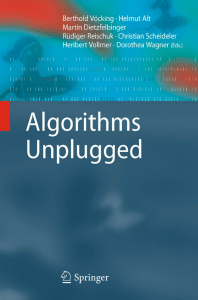Document 13510635

6.728
Applied Quantum and Statistical Physics:
Department of Electrical Engineering and Computer Science
Massachusetts Institute of Technology
PROBLEM SET 2
Problem Set Out: 9/13/06
READINGS
Chapters 4—6 of the text.
Problem Set Due: 9/20/06 at the beginning of class
PROBLEMS
Problem 2.1
Electron Double Slit Experiment
Read Demonstration of single-electron buildup of an interference pattern , by A.
Tomo mura et al., Am.
J.
Phys.
57 , pp.
117—120.
Go to the MIT’s Library web page, search the electronic journals for the American Journal of Physics and find the article.
You are not expected to understand all the details of the experiment.
The “two silts” are two sides of a biprism which gives different phases to electrons which pass on different sides of the biprism; this is much like the two slits which provide a phase difference due to their spa tial separation.
Read carefully the Introduction, the Figures and the last 5 paragraphs of
Section III which describe the experimental results.
(a) In the introduction the authors quote textbooks which state that the standard two-slit experiment can not be done because the scale of the experiment would be on too small of a scale.
For electrons which are excited across a voltage of 50 — 400 volts, calculate the range of the de Broglie wavelengths, and use this fact to comment on the authors comment.
(b) Historically, however, it was for electrons which the first interference was observed for matter waves.
See C.
Davison and H.
H.
Germer, Physical Review 30 , 705, 1927.
Read the first three pages, and especially note the first sentence of the text.
How does their experiment overcome the issue raised in part a?
(c) Confirm the formula in Davison and Germer for the de Broglie wavelength on page 20
(see also Table 1 on page 18).
Comment (or guess) why this formula differs from Equation 7 of Tonomura et al.
?
(d) Tonomura et al.
state near the end of Section IV that: “These results unambiguously demonstrate the wave-particle duality of electrons...We
must conclude that a certain posi tion on the screen is selected, onto which the electron collapses.” How does the electron select where to collapse?
(e) Is the statement in part d really an unambiguous demonstration?
Comment on the following analogy which is paraphrased from Section 2.1
of The Quantum Challenge by G.
Greenstein and A.
G.
Zajonc, p.
24.
Assume that the electron is only a wave.
“Discrete
1
detection events do not necessarily imply discrete impact events.
Looking out a window on a crisp day in the late fall, one sees the painted leaves of a maple [tree] shower to earth following a gust of wind.
Single leaves fall, one by one — but how shall we imagine the wind that caused them to fall?
Is the wind a hail of bullets that picks off leaves the way bullets pick off tin cans?
Or shall we think of the wind as a continuous, undulating fluid that rocks the leaves until their stems snap?” (Note that the same criticism applies to the observation of light by photodectectors and to the photoelectric effect.)
Parts d and e have introduced you to ’Measurement Problem’ in Quantum Mechanics.
Problem 2.2
Use Matlab to solve this problem, and consult the Eigenfunction expansion tutorial on the Web page.
The work that is done in this problem will serve as the basis for many future problems.
Consider the gaussian wave packet from Problem 1.3,
Ψ( x ) =
�
1
πL 2
�
1 / 4 e − x 2 / (2 L 2 )
(a) As in Problem 1.3, in Matlab define a column vector Ψ
L which is evaluated on the interval − 20nm ≤ x ≤ 20nm with increments of δx = 0 .
2nm.
Let L=0.5
nm, 1 nm, and 2 nm.
(b) As described in the tutorial, compute and plot the amplitude functions (expansion coefficients) | A
L
( q ) | 2 over an appropriate range.
(Note do not use the Matlab command fft because we will be generalizing this approach in future problem sets.)
(c) Show that
�
∞
−∞
| A
L
( x ) | 2 dq
2 π
= 1 by numerically calculating for each L
�
A ∗
L i
( q i
) A
L
( q i
)
δq
2 π
= 1 .
and compare your answer to the numerical expression
A ( q ) =
�
4 πL 2
�
1 / 4 e − q 2 L 2 / 2 by plotting this on the same graph as your numerical result.
(d) For q | A each
L
( x ) |
Ψ
L
2 dq
2 π numerically
.
compute Δ x , and for A
L numerically compute Δ q .
Show numerically
∞
−∞
2 that Δ x Δ q ≈ 1.
Recall that the normalization of A ( q ) means also that � q 2 � =
Problem 2.3
Let A , B , and C be operators.
(a) Show that
[ A, BC ] = [ A, B ] C + B [ A, C ]
(b) Let p and x be operators satisfying [ x, p ] = i ¯ and let the Hamiltonian be
H =
2 p 2 m
+
1
2 kx 2
Use the commutation relations and part a to find d dt
� x � and d dt
� p �
2





